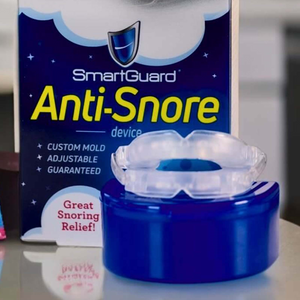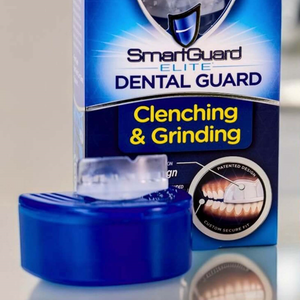Jul 05, 2025
TONSILLITIS: WHAT CAN YOU DO?
TONSILLITIS: WHAT CAN YOU DO?
Tonsillitis is when your tonsils—those two soft tissue pads at the back of your throat—become inflamed, usually due to an infection. It’s most common in kids, but adults, too, can get it.
The usual culprits are viruses (like the common cold or flu), though bacteria—especially Streptococcus pyogenes, the one behind strep throat—can also be to blame.
WHAT ARE THE SYMPTOMS AND MEDICAL TREATMENTS?
Common symptoms include the following:
-
Sore throat and painful swallowing
-
Red, swollen tonsils (sometimes with white or yellow patches)
-
Fever
-
Swollen lymph nodes in the neck
-
Bad breath and a scratchy voice
Treatment depends on the cause. Viral tonsillitis usually clears up on its own with rest, fluids, and over-the-counter pain medicines. If it’s bacterial, antibiotics may be prescribed.
If it keeps coming back or causes serious problems, doctors might recommend a tonsillectomy—surgical removal of the tonsils.
MORE CAUSES OF INFLAMED TONSILS
While infections—especially viral and bacterial—are the most common triggers of tonsillitis, there are a few lesser-known culprits that can inflame those tonsils too:
-
Allergies: Reactions to pollen, dust, or pet dander can irritate the throat and cause tonsil swelling, even without an infection.
-
Laryngopharyngeal reflux (LPR): A form of acid reflux where stomach acid reaches the throat, irritating the tonsils and surrounding tissues.
-
Environmental irritants: Smoke, pollution, or chemical fumes can inflame the tonsils over time.
-
Sexually transmitted infections (STIs): In rare cases, infections like syphilis or gonorrhea can cause throat symptoms, including tonsil inflammation.
These non-infectious causes are less common but worth considering—especially if tonsillitis keeps coming back without signs of a typical cold or flu.
HOW TO TREAT TONSILLITIS
Chronic tonsillitis is when your tonsils stay inflamed for weeks or keep flaring up repeatedly. This can be a real drag. Treatment depends on how severe it is and what’s causing it, but here are the most effective options:
-
Antibiotics:
If a bacterial infection is the culprit, doctors often prescribe antibiotics like penicillin or amoxicillin. For those allergic to penicillin, alternatives like cephalosporins or macrolides (e.g., azithromycin) may be used.
Pain relievers: Over-the-counter meds like ibuprofen or acetaminophen can help reduce pain and fever.
2. Home Remedies
Saltwater gargles: Help reduce swelling and soothe the throat.
Warm fluids: Herbal teas, broths, or warm water with honey can be comforting.
Rest and hydration: Crucial for recovery and immune support.
If you're looking to ease tonsillitis symptoms naturally, there are several home remedies that can help soothe the pain and support healing—especially if the cause is viral and doesn’t require antibiotics:
NATURAL REMEDIES FOR TONSIL RELIEF
-
Warm saltwater gargles: Mix ½ teaspoon of salt in a glass of warm water and gargle several times a day. It helps reduce swelling and discomfort.
-
Honey and herbal teas: Honey has antimicrobial properties and can coat the throat to ease irritation. Chamomile or ginger tea can also reduce inflammation and soothe soreness.
-
Cold treats: Ice cream, popsicles, or chilled smoothies can numb the throat and reduce pain temporarily.
-
Humidifiers: Adding moisture to the air can prevent your throat from drying out, especially in dry climates or during winter.
-
Rest and hydration: Your immune system needs downtime and fluids to fight off infection effectively.
BONUS HELPERS
-
Lemon and turmeric: Lemon juice (with honey and warm water) offers vitamin C and antibacterial benefits. Turmeric, with its anti-inflammatory properties, can be added to warm milk or gargles.
-
Peppermint or menthol lozenges: These can cool and numb the throat to lessen pain while offering mild antimicrobial effects.
These remedies won’t cure bacterial tonsillitis, but they can make you feel a lot better while your body does the heavy lifting. If symptoms last more than a few days or worsen, it’s best to check in with a healthcare provider.
-
Surgical Option
Tonsillectomy: If tonsillitis keeps coming back (typically 5+ times a year) or doesn’t respond to other treatments, surgical removal of the tonsils might be recommended. It’s a common and generally safe procedure with a short recovery period. If bleeding persists in the first few days after the surgery, get help immediately to prevent drowning.
If you’re dealing with frequent flare-ups, it might be worth tracking symptoms and discussing long-term options with a healthcare provider.
RECOVERY AFTER A TONSILLECTOMY
Recovery after a tonsillectomy can take about 10 days to two weeks, depending on your age and overall health. Kids often bounce back faster than adults, but everyone should plan for some downtime. Here’s what the process typically looks like:
-
Days 1–3: Rest and Hydration
-
Expect throat pain, possibly radiating to the ears.
-
Soft, cool foods like ice cream, applesauce, or smoothies are your best friends.
-
Stay well-hydrated—even sipping water helps healing.
-
Pain meds (as prescribed) are key to staying comfortable.
-
Days 4–7: Peak Discomfort
Pain may increase slightly around this time as scabs form and tighten.
You might notice bad breath—totally normal.
Keep resting and avoid strenuous activity.
-
Days 8–14: Healing Gains Momentum
Scabs begin to fall off naturally—don’t pick at them!
Appetite and energy start to return.
Still avoid crunchy, spicy, or acidic foods.
Watch for bright red bleeding (a medical emergency), a fever over 101°F, or signs of dehydration (dry mouth, dark urine, dizziness)
Most people can return to work, school, or regular activities after about two weeks, but it’s best to follow your doctor’s guidance based on how you’re healing.
POSSIBLE SIDE EFFECTS OF A TONSILLECTOMY
-
Immune System Changes
Tonsils are part of your immune system’s first line of defense. Removing them may slightly reduce your ability to filter out airborne pathogens, especially early on. Most people adapt well, but some may notice a slight increase in respiratory infections.
-
Increased Risk of Certain Conditions
A large-scale study found that childhood tonsillectomy may be linked to a higher risk of respiratory, allergic, and infectious diseases later in life. This doesn’t mean everyone will experience these issues, but it’s something to weigh against the benefits.
-
Sensory and Functional Effects
Some people report temporary changes in taste or swallowing, and in rare cases, these can linger. Voice changes or chronic throat dryness have also been noted, though they’re uncommon.
While many feel better post-surgery, others may experience more frequent throat irritation or a sense of reduced throat immunity. It’s a trade-off: fewer infections vs. potential long-term sensitivity.
Enlarged or swollen tonsils can be a major culprit behind snoring—especially in children, but also in some adults. Here’s how they stir up nighttime noise:
-
Airway Obstruction
Tonsils sit at the back of your throat, right where air flows in and out. When they’re enlarged—due to infection, inflammation, or just naturally—they can narrow the airway, making it harder for air to pass through smoothly during sleep. That restricted airflow causes the soft tissues to vibrate, which we hear as snoring. A good remedy for airway obstruction, which causes snoring, is an over-the-counter anti-snore device. These gently advance the lower jaw forward, opening the airway at the back of the throat. I recommend the one produced by SmartGuard RX.







